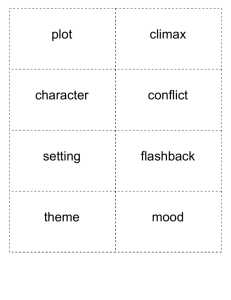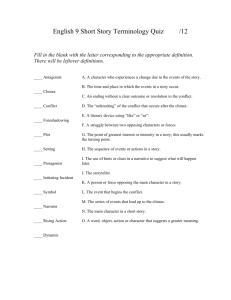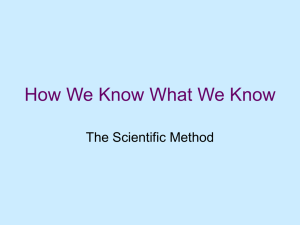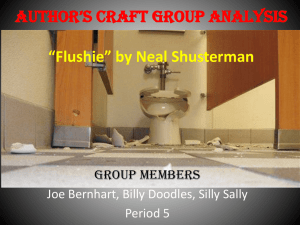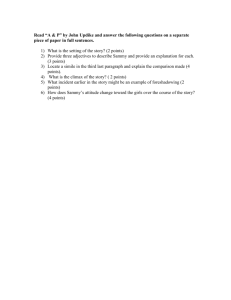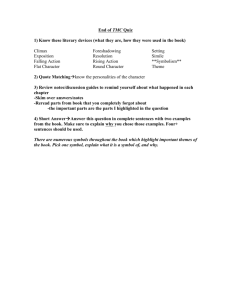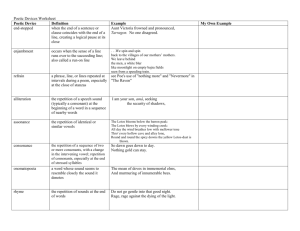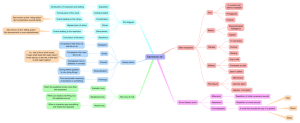Structure and Style in Literature
advertisement
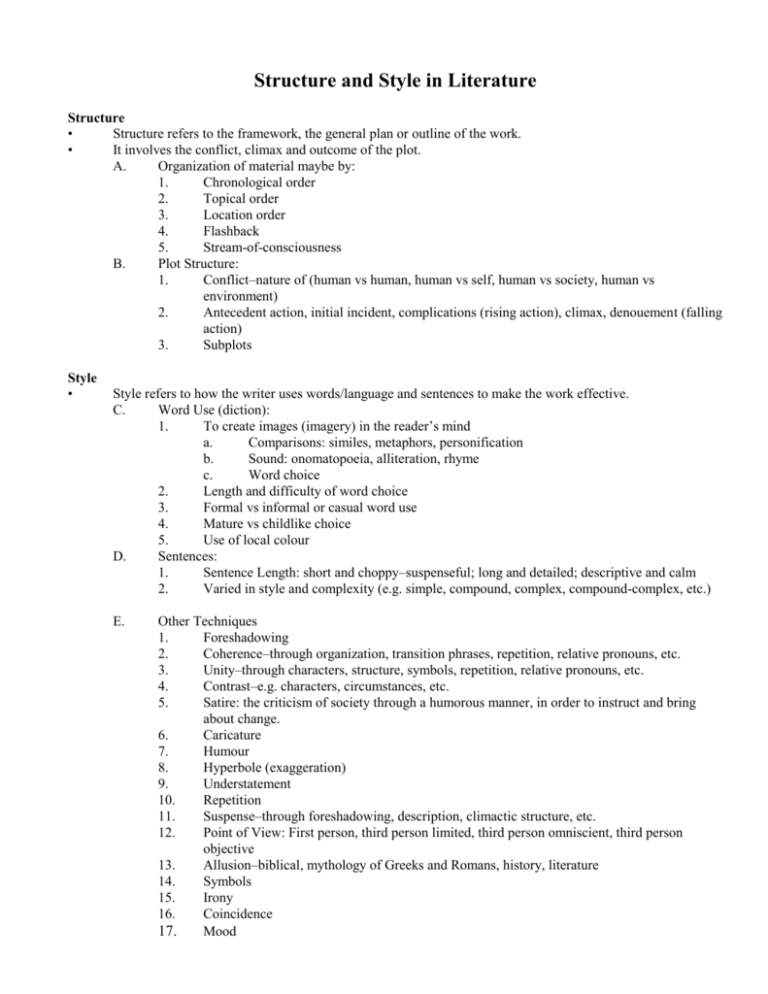
Structure and Style in Literature Structure • Structure refers to the framework, the general plan or outline of the work. • It involves the conflict, climax and outcome of the plot. A. Organization of material maybe by: 1. Chronological order 2. Topical order 3. Location order 4. Flashback 5. Stream-of-consciousness B. Plot Structure: 1. Conflict–nature of (human vs human, human vs self, human vs society, human vs environment) 2. Antecedent action, initial incident, complications (rising action), climax, denouement (falling action) 3. Subplots Style • Style refers to how the writer uses words/language and sentences to make the work effective. C. Word Use (diction): 1. To create images (imagery) in the reader’s mind a. Comparisons: similes, metaphors, personification b. Sound: onomatopoeia, alliteration, rhyme c. Word choice 2. Length and difficulty of word choice 3. Formal vs informal or casual word use 4. Mature vs childlike choice 5. Use of local colour D. Sentences: 1. Sentence Length: short and choppy–suspenseful; long and detailed; descriptive and calm 2. Varied in style and complexity (e.g. simple, compound, complex, compound-complex, etc.) E. Other Techniques 1. Foreshadowing 2. Coherence–through organization, transition phrases, repetition, relative pronouns, etc. 3. Unity–through characters, structure, symbols, repetition, relative pronouns, etc. 4. Contrast–e.g. characters, circumstances, etc. 5. Satire: the criticism of society through a humorous manner, in order to instruct and bring about change. 6. Caricature 7. Humour 8. Hyperbole (exaggeration) 9. Understatement 10. Repetition 11. Suspense–through foreshadowing, description, climactic structure, etc. 12. Point of View: First person, third person limited, third person omniscient, third person objective 13. Allusion–biblical, mythology of Greeks and Romans, history, literature 14. Symbols 15. Irony 16. Coincidence 17. Mood
